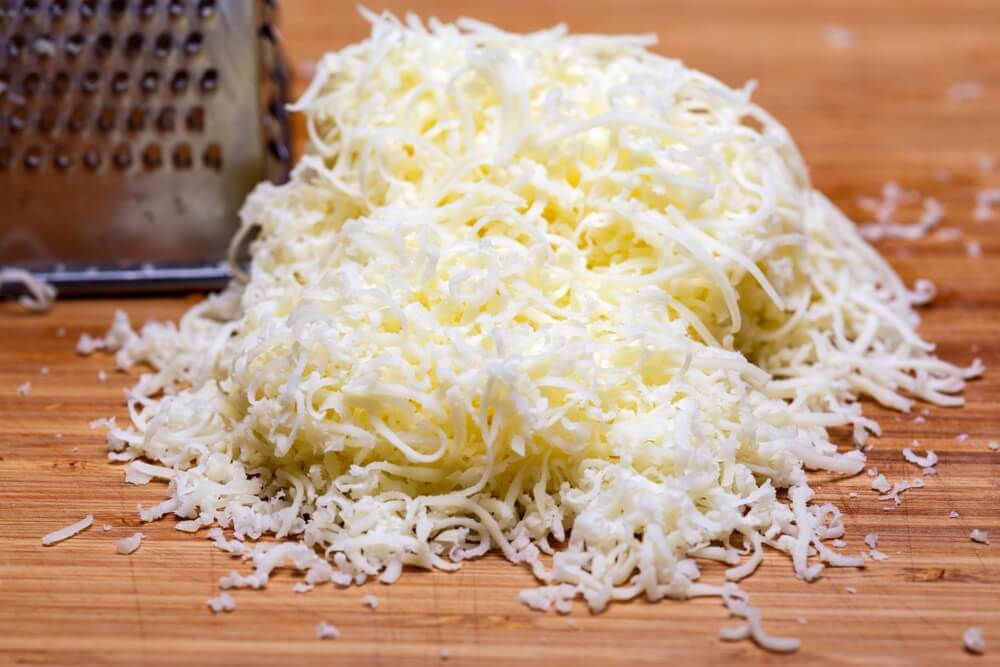Types of Cheese and Their Nutritional Value


Reviewed and approved by the nutritionist Eliana Delgado Villanueva
Cheese making is a thousand-year-old art which is done differently in every region. Each culture has its own curing techniques and milk mixtures. That’s why there’s a wide variety of different types of cheese.
These foods are beneficial to health. They provide essential nutrients to ensure the proper functioning of the human body.
Health Benefits of Cheese
First, read the following health benefits of these different types of cheese:
- High in protein.
- Good source of essential amino acids.
- Contains a large amount of folic acid.
- Contains vitamin B, which is good for healthy skin.
- One of the main sources of calcium, a structural mineral for bones and teeth. Studies have shown that a correct intake of this element reduces the risk of developing osteoporosis.
- Stimulates the production of saliva, reduces bacterial plaque, and helps keep the mouth clean.
It’s worth mentioning that the nutritional value will vary depending on the type of cheese. Likewise, the types of cheese vary depending on the milk that they’re made out of. For example, there are cheeses that come from cow’s milk, goat’s milk, sheep’s milk, or buffalo’s milk. Sheep’s milk contains twice as much protein than the others.
Types of Cheese: Cheddar

The first most well-known type of cheese is originally from the village of Cheddar in Somerset, England. This was once the only place it was made. However, since its production is not protected, cheddar can be made anywhere.
This cheese comes from cow’s milk and its flavor is quite intense. It’s a relatively hard cheese that has a white color. When cured, its texture is slightly brittle or soft.
Nutritional Value (1 portion of 100g)
- Energy: 392.84 calories
- Protein: 25.39 g
- Carbohydrates: 0.36 g
- Sodium: 675 mg
- Total fat: 32.2 g
- Vitamins: B1, B2, B6, B12, C
Read this article too: Cheese and Coconut Rolls, a Very Simple and Gluten-free Recipes
Types of Cheese: Parmesan
The second of the most popular types of cheese is Parmigiano Reggiano, or Parmesan, and is considered to be one of the best. Parmesan cheese comes from the milk of cows that graze on fresh grass and hay. It comes from the provinces of Parma, Reggio Emilia, Bologna, Modena, and Mantua.
Parmesan cheese has an unmistakable smell and possesses a variety of well-defined aromas – wine, raisins, and dried fruit. Its texture is hard and rough. It has a fruity and nutty flavor that’s difficult to cut due to its texture. It’s usually sold grated or grated over soups, pasta, and risottos.
It contains vitamin D in its composition, an essential nutrient to ensure good bone health, according to a study published in Best Practice & Research.
Nutritional Value (1 portion of 100 g)
- Energy: 375 calories
- Protein: 35.6 g
- Carbohydrates: 0.06 g
- Sodium: 704 mg
- Total fat: 25.8 g
- Vitamins: A, B1, B2, B6, B12, C, D
Types of Cheese: Mozzarella

The third popular cheese is mozzarella. This fresh cheese comes from the milk of buffalos that graze in very few countries, such as Bulgaria and Italy. Therefore, the majority of mozzarella cheese sold in supermarkets and shops comes from cow’s milk.
It’s originally from Aversa, a city in Italy. This cheese is eaten fresh, which is soft, greasy and fibrous. It’s mostly used on pizzas and salads.
Nutritional Value (1 portion of 100 g)
- Energy: 233 calories
- Proteins: 19.9 g
- Carbohydrates: 2.20 g
- Sodium: 373 mg
- Total fat: 16.1 g
- Vitamins A, B1, B2, B6, B12, C, D
Buffalo milk has a higher protein content than milk from other animals. These nutrients have been shown to be essential to ensure muscle health, making mozzarella an optimal cheese when the goal is to increase lean mass.
Types of Cheese: Roquefort
The fourth most popular type of cheese in the world is Roquefort. This cheese was Charlemagne’s favorite. In France, its place of origin, people say that this is the “cheese of kings and popes”.
Its flavor is very strong and salty. It also easily breaks into pieces and is moist. People often use it in salads or as a topping.
Nutritional Value (1 portion of 100 g)
- Energy: 369.4 calories
- Proteins: 21.5 g
- Carbohydrates: 2 g
- Sodium: 1,496 mg
- Total fat: 30.6 g
- Vitamins: A, B1, B2, B6, B12, C, D
Check out this article too: Delicious Chicken Breasts with Cheese Sauce Recipe
Types of Cheese: Monterey Jack

This cheese originates from the city of Monterey in California and it comes from cow’s milk. Due to its commercial value, a businessman named David Jack began selling it all across California.
This cheese has a mild flavor and is very common in Mexican cooking. It also has a texture and flavor that’s very similar to Cheddar and goes perfectly with red wine.
Nutritional Value (1 portion of 100 g)
- Energy: 379 calories
- Protein: 24.8 g
- Carbohydrates: 0.68 g
- Sodium: 543 mg
- Total Fat: 30.64 g
- Vitamins: A, B1, B2, B6, B12, C, D
Cheese, a healthy food
As you’ve seen, cheese stands out for its high nutritional density. Its consumption guarantees adequate bone and muscle health, so its regular presence in the diet is recommended.
Do you like cheese and do you eat it regularly? If you would like to have an adequate consumption, don’t hesitate to consult a nutritionist.
All cited sources were thoroughly reviewed by our team to ensure their quality, reliability, currency, and validity. The bibliography of this article was considered reliable and of academic or scientific accuracy.
- Cano A, Chedraui P, Goulis DG, Lopes P, Mishra G, Mueck A, Senturk LM, Simoncini T, Stevenson JC, Stute P, Tuomikoski P, Rees M, Lambrinoudaki I. Calcium in the prevention of postmenopausal osteoporosis: EMAS clinical guide. Maturitas. 2018 Jan;107:7-12.
- Lips P, van Schoor NM. The effect of vitamin D on bone and osteoporosis. Best Pract Res Clin Endocrinol Metab. 2011 Aug;25(4):585-91
- Landi F, Calvani R, Tosato M, Martone AM, Ortolani E, Savera G, D’Angelo E, Sisto A, Marzetti E. Protein Intake and Muscle Health in Old Age: From Biological Plausibility to Clinical Evidence. Nutrients. 2016 May 14;8(5):295.
This text is provided for informational purposes only and does not replace consultation with a professional. If in doubt, consult your specialist.








